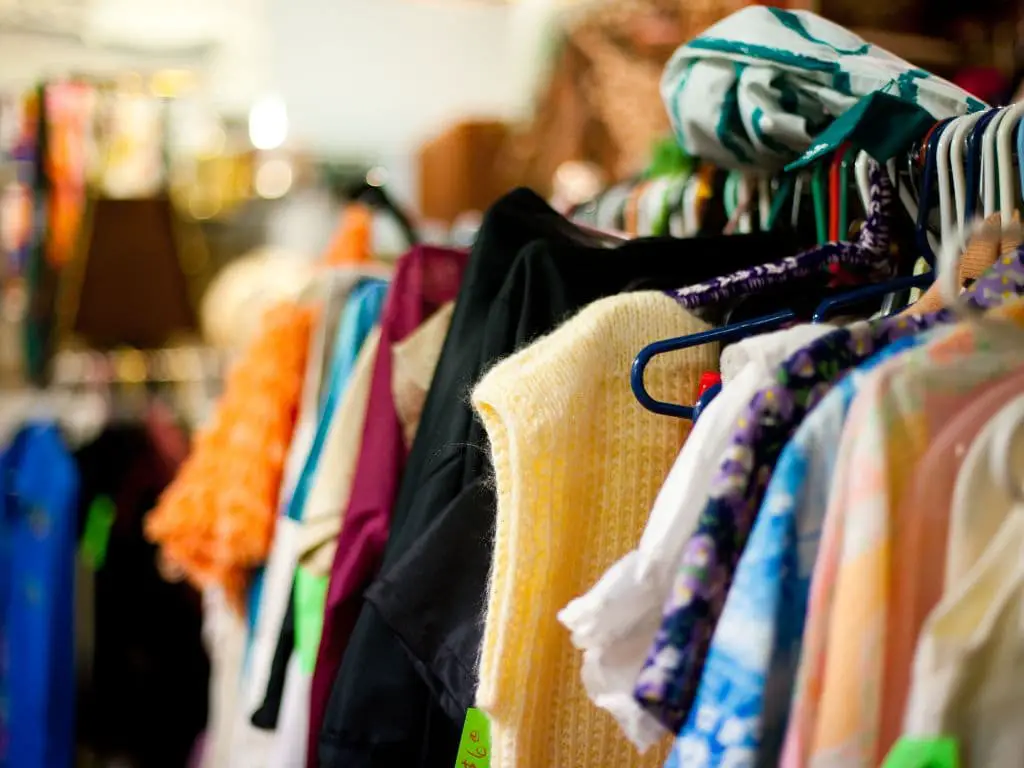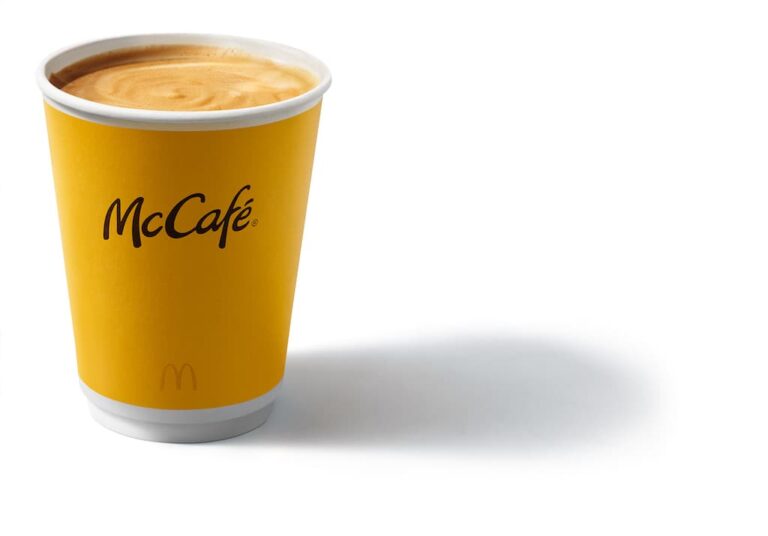What Is That Smell in Goodwill Stores?
The distinctive smell that permeates Goodwill stores is instantly recognizable to frequent thrifters. A complex aroma that varies by location and season, the scent is a mingling of odors from donated secondhand goods, especially clothing.
For some, the smell evokes feelings of nostalgia and the thrill of the hunt for hidden treasures. For others, the stench is overpowering and unpleasant.
But why does Goodwill smell? Goodwill stores often have a distinctive smell due to a combination of factors including body odor, sweat, and natural oils from donated used clothing, the scent of dead skin cells, the musty odor of mildew and mold from items stored in damp conditions, and the residual chemical smell from dry cleaned garments.
Let’s explore the various factors that contribute to create that unique sensory experience.

What are the Different Factors Contributing to the Thrift Store Smell?
One major contributor to the smell of Goodwill stores is body odor, sweat, and the natural oils that build up on used clothing. When we wear garments, our skin sheds dead cells and secretes oils and sweat that get absorbed into the fabric fibers. Even after washing, traces of body odor can linger. When clothes are donated without being cleaned, the stale sweat smell and accumulated skin oils lead to a perceptible human aroma. This varies by individual based on diet, hygiene, and other factors. The dirt, grime, and skin residue rubbed into used clothes contributes to the overall secondhand smell.
Along with sweat and oils, the accumulation of dead skin cells on used garments also adds to the distinctive scent of Goodwill stores. As we wear clothing, our dead skin cells constantly fall off and collect in the fabric. Over time, this builds up and becomes difficult to remove completely. Dead skin emits a particular musty, organic odor as it decays. When clothes covered in dead skin smell get donated without washing, it amplifies the overall essence of used clothing. The older and more worn the garments, the more amplified this stale, dried-out skin smell.
Another major factor is the presence of mildew and mold. If donated used clothes were stored in humid, damp conditions, both mildew and mold can start proliferating. Both emit that characteristic earthy, musty odor associated with decay. Even small amounts of mildew smell or mold smell can permeate garments and overtake other scents. Storage bins at Goodwill can also foster additional mildew growth if moisture gets trapped. The combination of old clothing odors and new mildew stench creates an aggressive musty, stale aroma.
Many donated garments were previously dry cleaned, leaving behind the harsh chemical smell of dry cleaning solvents. Most dry cleaners use potent chemicals like perchloroethylene or trichloroethylene which can cling to fabric and resist complete removal. Even after airing out, dry cleaned clothes retain a hint of that sharp, chemical odor. When aggregated in Goodwill stores, the collective dry cleaning smell of multiple garments generates an undertone of industrial fumes that commingles with the other scents.
Is the Smell of Goodwill Unpleasant or Nostalgic?
For many shoppers, the blend of odors in Goodwill stores is perceived as unpleasant or overpowering. The overall moldy, musty quality of the air can be off-putting. Others are bothered by the distinct human smells – the mix of body odor, sweat, and skin oils. Some find the chemical undertones irritating or reminiscent of pollution. The sheer intensity and layered nature of the smell can be overwhelming. For people sensitive to scents, it can preclude browsing for long periods before getting a headache.
However, the same smells that some detest can evoke nostalgia in others. For devoted thrifters, that poignant Goodwill smell transports them back to childhood visits or memorable vintage finds of the past. The musty, mothball scent of aged clothing conjures up grandparents’ attics stuffed with old family treasures. And the faint sweat smell clinging to well-worn garments creates a comforting link to the anonymous people who once lived in those skins. The overall funky odor palette is a marker of the authentic lived history hanging on each rack.
How Can You Get Rid of the Smell of Goodwill?
Some people try using perfume or air freshening sprays to mask the smell inside Goodwill stores, but this typically offers only temporary relief. The intense, layered scents of body odor, mildew, and chemicals tend to overpower most artificial fragrances. While a blast of perfume might provide immediate relief, the smells soon mix together into one discordant aroma. Powerful chemical air fresheners containing antibacterials may have marginal impact for a short period. Overall though, the core odors at Goodwill locations are too stubborn to camouflage.
What are Effective Ways to Eliminate the Musty Smell from Used Clothing?
The optimal way to remove the distinctive Goodwill smell from newly acquired used clothes is by thoroughly washing them. Laundering with detergent specially formulated for odor removal helps lift away body oils and dead skin cells that cause lingering scents from previous wearers. Drying outside in the fresh air can help dissipate musty odors. For mildew, washing with bleach solution kills spores and gets rid of that lingering earthy dampness. Dry cleaning also removes embedded sweat smell and oils, but leaves behind chemical solvent smells. Combining these techniques according to garment labels provides the best chance of fully eliminating the eclectic fragrance of secondhand stores.
Is the Smell of Goodwill Harmful to Your Health?
For most people, the musty mold and mildew smell inside Goodwill is harmless, especially if exposure durations are short. However, those with allergies or sensitivity may experience irritated eyes, runny noses, coughs, or headaches after smelling elevated mildew odors. Prolonged inhalation of airborne mold spores can potentially trigger respiratory issues as well. Rarely, contaminated garments could transmit fungal infections through contact. While unlikely in a retail context, those with severe mold allergies or compromised immunity may wish to avoid areas emitting strong earth, moldy smells.
The chemical solvents used in dry cleaning, notably perchloroethylene, can potentially cause health issues for some people. Dry cleaned items off-gas small amounts of solvents that linger after treatment. At Goodwill locations, collective buildup of these chemical fumes concentrates their presence in the air. Short-term exposure likely poses minimal risk. However, regular, close contact with dry cleaned clothes could lead to effects like dizziness, headaches, or nausea in those with chemical sensitivities. Whileunpacking newly purchased dry cleaned garments in a well-ventilated area is advisable forall. But for most, the faint dry cleaning smell present in Goodwill stores is not a significant health hazard.
Frequently Asked Questions
-
What is that smell in Goodwill stores?
SIGNNATURE VANILLA SCENT “It’s really something to fool you. They actually have an air freshener in their backs. Take your Goodwill clothes home and wash them.
-
How often should you go to a thrift store?
You can go a couple of times per week to find what you are looking for. You can probably get by with thrifting only once per week if you’re doing it to help you organize your wardrobe.
-
What is the best day to shop at Goodwill?
There is no one day that’s better than another to buy second-hand stores. However, regulars recommend shopping Monday through Tuesday. Many homeowners drop their leftovers from garage sales on Sunday evenings, which can lead to new discoveries. Employees are more likely to shop on weekends, which makes it harder for them to stock up early in the work week.
-
What do the color tags mean at Goodwill?
If there’s one thing that you need to pay attention to is the Goodwill price tag color, it’s its color. Goodwill colors codes price tags to get 50% off You should pay close attention to the Weekly Discount Color Changes every 7 days.
-
Why are thrift stores so expensive?
This rising popularity aside, it is likely that the increasing number of teenagers who thrift for pleasure every weekend contributes significantly to rising prices than individual resellers. With large thrift stores, there is also the constant factor of corporate greed.
-
What is a goodwill discount?
Goodwill has regular special discounts for its customers, in addition to offering frequent offers and promotions. Every Sunday and Monday, take 50% off all items purchased with the weekly color tag. Military Day is every day. Get 10% off any purchase when you present your military ID.
-
How often does Goodwill change their color?
You can save even more when you shop at Goodwill. Pay attention to the color of your tag! All merchandise priced at a certain color tag is 50% off in our Goodwill Store & Donation Centers. Every Tuesday, the discounted tag color changes.
-
Does goodwill restock everyday?
Goodwill releases stock about every 30 mins throughout the day. As long as they aren’t being hampered from their work, you can shop at these rolling shelves to replenish your inventory.
-
What is the color of the week?
Sunday Red. Monday Yellow. Tuesday Yellow. Tuesday Purple, yellow or multicolored
-
What is the best day to go to TJ Maxx?
Stop by any hour between Tuesday and Friday. TJMaxx and HomeGoods are best for shopping from Tuesday to Friday in the late morning. Mondays can be a bit disappointing as it takes some time for shelves to replenish after the weekend.
-
Is it better to thrift in the morning?
To avoid the crowds and to find the most valuable merchandise, go thrifting in the early morning. You can also look out for sales days at your thrift shop.
-
What day do thrift stores restock?
Fridays: Stores get a lot of merchandise on weekends when people have time to unload and pick up their stuff. There’s less good stuff at the end of the week so make sure to wait for Monday or Tuesday, when volunteers can sort through the donations and replenish the shelves.
-
What day is senior discount at Target?
Target offers senior hours for shoppers who are elderly. Every Tuesday, Target offers senior shoppers the opportunity to shop from 8 to 9 am.
-
What do you do with old logo shirts?
Employees may be interested in donating clothing that is no longer fitting or has current logos. Employees should never wear out or discard items that are not needed.
-
Which is cheaper TJ Maxx or Marshalls?
Others shoppers believe Marshalls has lower prices. It all depends on the person shopping. Although both stores have similar pricing structures, and there is some overlap in merchandise, each retailer has its own strengths. T.J.






